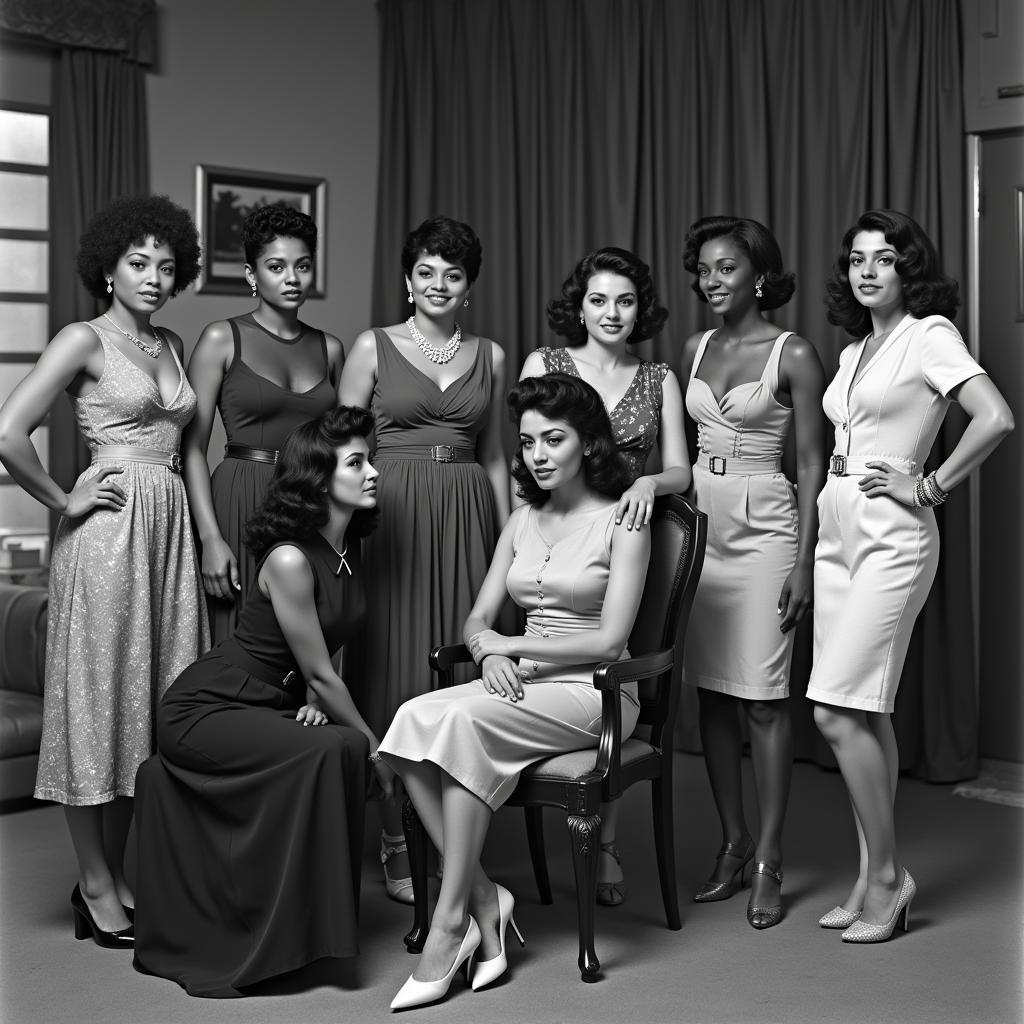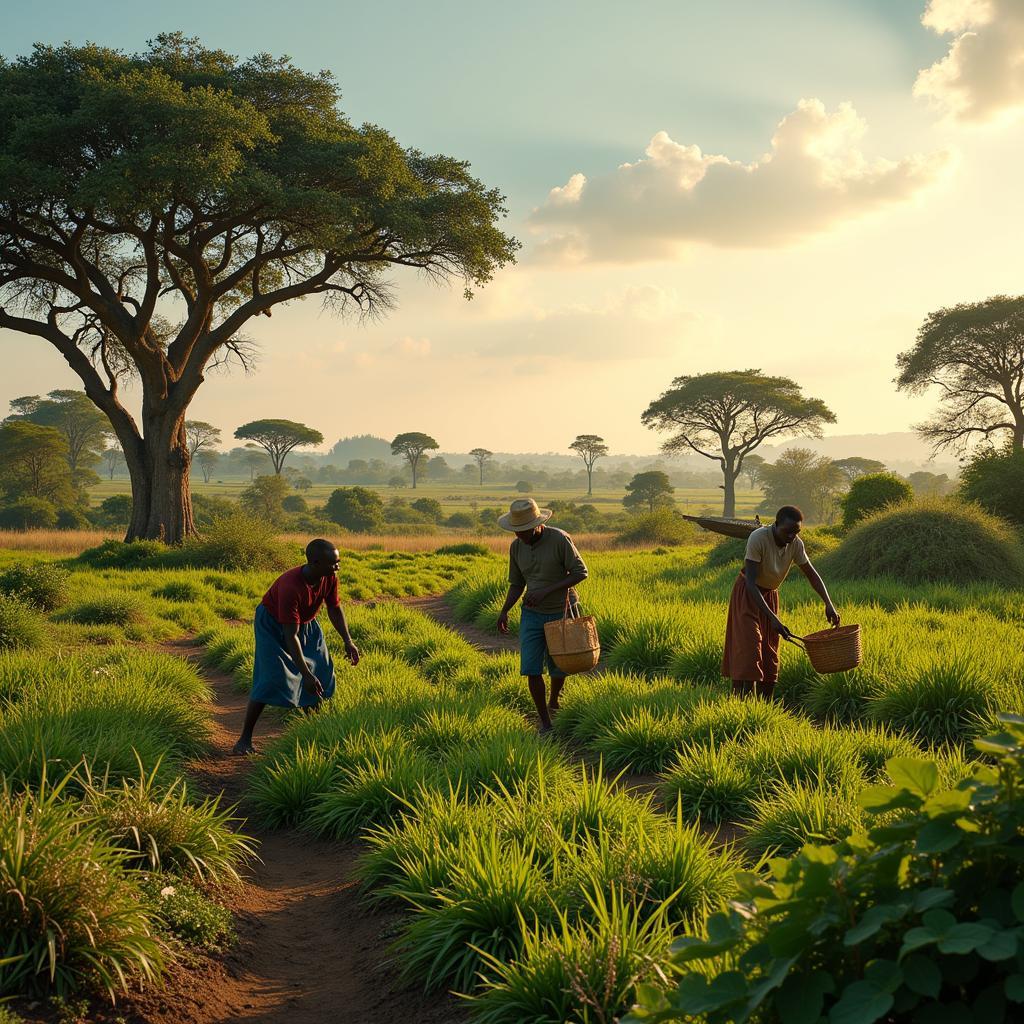African Call and Response Songs: A Journey Through Rhythms and Tradition
African Call And Response Songs are an integral part of the continent’s rich musical heritage. They are a powerful form of communication that goes beyond mere words, embodying the spirit of community, storytelling, and cultural expression. These songs are not simply a musical genre; they are a reflection of the very soul of Africa, interwoven with its history, beliefs, and social fabric.
The Essence of Call and Response
Call and response songs, as the name suggests, involve a back-and-forth exchange between a leader (the “caller”) and a group (the “responders”). This dynamic interaction creates a rhythmic conversation that is both captivating and meaningful. The call often sets the tone, while the response amplifies and reinforces the message.
“Call and response is more than just a musical technique; it’s a way of life in Africa,” explains Professor Aisha Mbiti, a renowned ethnomusicologist specializing in African music traditions. “It’s about community participation, shared experiences, and a sense of unity.”
A Legacy of Storytelling
For centuries, African call and response songs have been used to tell stories, convey historical events, and pass down cultural knowledge. Through lyrical verses and rhythmic patterns, generations have shared their experiences, myths, and legends. These songs provide a powerful link between the past, present, and future, ensuring the preservation of cultural identity.
Beyond Music: A Social and Spiritual Force
Call and response songs are not confined to entertainment. They play a vital role in various social and spiritual contexts:
- Religious Rituals: In many African cultures, call and response songs are used in religious ceremonies to communicate with the divine, invoke blessings, and express gratitude.
- Community Gatherings: These songs serve as a unifying force in celebrations, funerals, and other social events, bringing people together and fostering a sense of belonging.
- Work Songs: In traditional settings, call and response songs provided rhythm and encouragement for tasks such as farming, fishing, and building.
The Diversity of African Call and Response
Africa is a continent of diverse cultures, and its musical traditions are equally varied. Call and response songs take on different forms and styles depending on the region, language, and cultural context.
Examples of African Call and Response Songs:
- South Africa: The “Isicathamiya” style of singing, originating from the Zulu people, features complex harmonies and intricate call and response patterns.
- West Africa: “Griot” musicians in countries like Senegal and Mali use call and response to preserve oral histories and praise ancestors.
- East Africa: “Taarab” music from Tanzania, influenced by Arabic and Indian traditions, often incorporates call and response elements.
Call and Response: A Global Influence
The influence of African call and response songs extends beyond the continent. From gospel music in the United States to reggae in Jamaica, these musical techniques have been adopted and adapted by musicians worldwide.
Preserving the Tradition
While African call and response songs are a vital part of the continent’s cultural heritage, they face the challenge of modernization and globalization. It is essential to actively preserve and promote these traditions, ensuring that future generations can continue to experience their power and beauty.
FAQ
1. What are some examples of African call and response songs?
Many African call and response songs are well-known around the world, including “Wimoweh” by the African-American vocal group, The Weavers. The song is based on a traditional Zulu song, and the chorus, which features the memorable call and response of “Wimoweh,” is one of the most recognized parts.
2. What are the benefits of learning call and response songs?
Learning call and response songs provides several benefits, including developing a sense of rhythm and timing, enhancing vocal skills, improving teamwork, and promoting cultural understanding.
3. Where can I find resources for learning call and response songs?
There are numerous resources available for those interested in learning more about African call and response songs. Online platforms, educational institutions, and community organizations offer workshops, classes, and materials that provide insights into the history, techniques, and cultural significance of this musical tradition.
4. What are some popular African call and response songs?
While many African call and response songs are rooted in specific cultural traditions and not widely known, “Wimoweh” is an example of a song that was adapted into popular culture. Other notable examples include “Ayi Yi Yi” from Ghana and “Shosholoza” from South Africa.
5. How can I experience the magic of African call and response songs firsthand?
Immerse yourself in the vibrant African music scene by attending festivals, concerts, or workshops that celebrate call and response traditions.
6. Can you name any famous African artists who utilize call and response techniques?
Many artists from around the world utilize call and response in their music. Artists like Miriam Makeba, Hugh Masekela, and Salif Keita, all of whom have roots in Africa, have gained international recognition through incorporating these techniques into their performances.
A Timeless Tradition
African call and response songs are a testament to the power of music to transcend time, language, and culture. They offer a glimpse into the heart and soul of Africa, a vibrant and enduring tradition that continues to inspire and captivate audiences worldwide.


